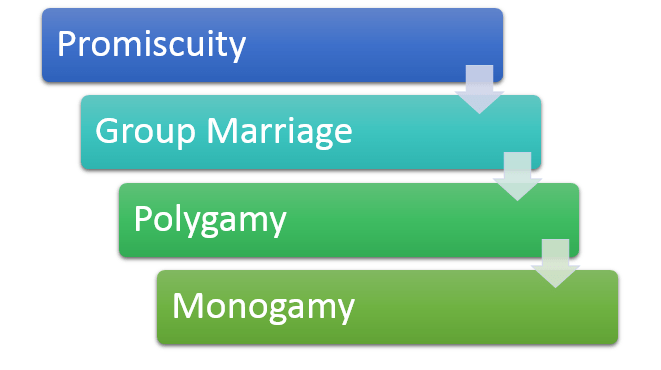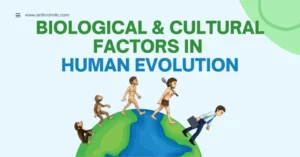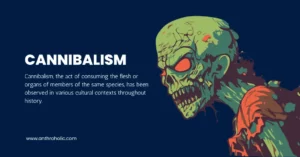AI Answer Evaluation Platform Live Now. Try Free Answer Evaluation Now
Origin of Marriage
The study of the origin of marriage can be traced back to the work of Morgan where he explained various kinship systems in Ancient Society (1877).

Marriage is a universal institution which socially acknowledges the union between a man and a woman (Notes and Queries, 1951). It provides the rules to regulate reproduction in a society (Fortunato, 2015).
The kinship system and reproduction play a vital role in the evolution of marriage institutions (Fortunato, 2015).
The biological and sociological factors of the origin of marriage are discussed under –
- The primary end of marriage is socially accepted sexual union, human society makes conscious efforts in order to preserve this institution.
- Desmond Morris in The Naked Ape, argues that man takes a longer time in copulation hence, has given a lasting character to the marriage which helps in bringing up the offspring (Baral, 1999).
- Mother – child combination protection – To ensure appropriate security and the satisfaction of personal needs like affection, status, and companionship for both mother and child, marriage offers a stable organisation that includes both men and women (Sharma, 2023).
Origin of marriage as an institution

When humans started to use his brain and begin hunting and gathering, the males were responsible for the hunting and protection while the females were responsible for gathering of fruits, shoots and vegetation along with rearing children. This division of labour was critical to survival.
As the society developed into a more settled one, the administration, health care, housing, etc. were developed, the survival chance of the children also increased, this led to more helping hands in agriculture and allied activities. The role of a woman changed into a child catering machine to provide more hands in the agrarian society. The husband assumed the role of protector and the provider of his wife and children.
As the society developed further, the wars and battles became a common phenomenon, where the man was considered as an asset while woman a liability. This poses a threat to the society as men died frequently in the wars leaving women behind. The system of polygamy came into existence where a man or woman can have multiple spouses at the given time.
Later, when the society became stable the women were given importance apart from the role of a child rearing machine. She was given opportunities and her dependence of male counterpart decreased. Rearing of children became the secondary function and marriage patterns changed into monogamy.
Origin of Marriage as per Morgan
Morgan in The Ancient Society (1877) gave the unilinear evolution of society which began with savagery, barbarism and ended with civilization. He argued that each stage is correlated with marriage and family patterns. He argued that the origin of society began with the promiscuity with no familial and marriage structures. Over time marriage and family institutions emerged, but there existed sexual relations between the brothers and sisters along with certain restrictions. Next stage was group marriage where more than one man marries more than one woman to form a family. In later male dominated stages polygamous marriages emerged where a man has several wives; this stage was followed by the monogamous marriage system which is considered as a developed stage in human society.
*The new – evolutionism under Leslie White counters the Morgan’s theory of origin of marriage and argues that the evolution takes place in a parabolic curve where the monogamous marriage stage is further leading to promiscuity and the process continues.
Conclusion
Since the beginning of the culture, marriage has been an important institution and the origin of marriage is described along the lines of biological and cultural evolution of man. Marriage is evolving as and along with the development of society. It has undergone several changes and is continuing changing. The definitions of marriage only talks about the union of man and woman but in today’s world same sex marriage, live in relationships have also became an integral part and are influencing this institution.
References
1. Adshade, Marina & Kaiser, Brooks. (2008). The Origins of the Institutions of Marriage. Queen’s University, Department of Economics; Working Papers.
2. Ansley J. Coale. (1971). Age patterns of marriage. Population Studies, 25:2, 193-214, DOI: 10.1080/00324728.1971.10405798 . Accessed on 24 February 2023.
3. Baral, J. K., & Chowdhury, A. (1999). Family in Transition: Power and Development. Northern Book Centre; New Delhi. https://www.researchgate.net/publication/24118480_The_Origins_of_the_Institutions_of_Marriage . Accessed on 24 February 2023.
4. Fortunato Laura. (2015). Evolution of Marriage Systems. University of Oxford; UK.
5. Fox, Robin (1997). Reproduction & Succession: Studies in Anthropology, Law and Society. New Brunswick, NJ: Transaction Publishers.
6. Hall, G. (1982). Origin of the Marriage Metaphor. Hebrew Studies, 23, 169–171. http://www.jstor.org/stable/27908774 . Accessed on 24 February 2023.
7. M’Lennan John. (1865). Primitive Marriage. Edinburgh; Adam and Charles Black.
8. Morgan L. H. (1964). Ancient society. Belknap Press of Harvard University Press.
9. Sharma, S. (2023, February 19). Universality of Marriage. Anthroholic. https://anthroholic.com/universality-of-marriage. Accessed on February 25, 2023.




